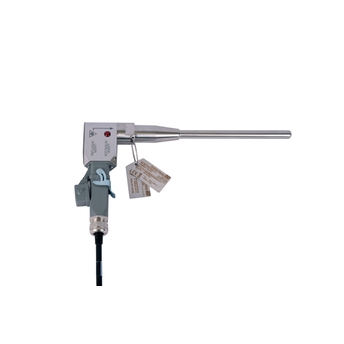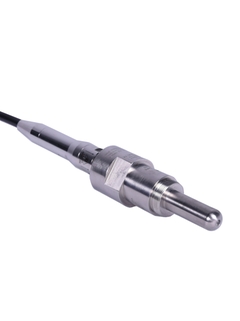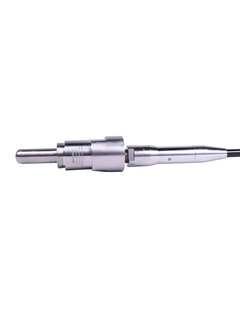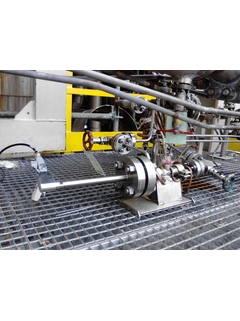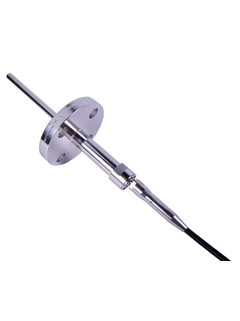-
Measuring principle
Raman spectroscopy
-
Spectral coverage
Probe spectral coverage is limited by the coverage of the analyzer being used.
-
Temperature
Temperature, Rxn-40 probe:
-30 to 150 °C / -22 to 302 °F -
Maximum laser power into probehead (mW)
< 499
-
Sample interface
Temperature, Rxn-40 mini configuration:
-30 to 120 °C / -22 to 248 °F (316L stainless steel)
-30 to 150 °C / -22 to 302 °F (C276 alloy)
-30 to 150 °C / -22 to 302 °F (Grade 2 Titanium)
Temperature ramp:
≤ 30 °C/min
≤ 54 °F/min
Temperature, Rxn-40:
-30 to 120 °C / -22 to 248 °F (316L stainless steel)
-30 to 280 °C / -22 to 536 °F (C276 alloy)
-30 to 315 °C / -22 to 599 °F (Grade 2 Titanium)
Temperature ramp:
≤ 30 °C/min
≤ 54 °F/min
Flange: ASME B16.5 and DIN EN1092 Type B flanges available upon request
Relative humidity: up to 95%, non-condensing -
Pressure
Min pressure: Full vacuum (0 bara) but not ultrahigh vacuum (UHV) where outgassing maybe a concern
Max pressure, Rxn-40 mini configuration:
157.1 barg/ 2279 psig (316L stainless steel)
199.3 barg/ 2890 psig (C276 alloy)
153.6 barg/ 2228 psig (Grade 2 titanium)
Max pressure, 1/2 inch Rxn-40:
142.4 barg/ 2066 psig (316L stainless steel)
158.1 barg/ 2293 psig (C276 alloy)
65.2 barg/ 946 psig (Grade 2 titanium)
Max pressure, 3/4 and 1 inch Rxn-40:
169.5 barg/ 2458 psig (316L stainless steel)
182.8 barg/ 2651 psig (C276 alloy)
72.2 barg/ 1047 psig (Grade 2 titanium) -
Wetted materials
Metal: C276 alloy, 316L stainless steel, or Grade 2 titanium
Window: High-purity sapphire -
Fiber optic cable
Cable sold separately
-
Length
Rxn-40 mini configuration immersible length:
36 mm / 1.42 inch
Rxn-40: Maximum immersible length is dependent on material choice -
Diameter
12.7, 19.05, 25.4 mm
0.5, 0.75, 1 inch -
Hazardous area certifications
ATEX, CSA, IECEx
Field of application
The Raman Rxn-40 probe is a sealed immersion probe for in situ Raman spectroscopy of liquid-phase samples in a laboratory or process plant setting. The process connection for the Raman Rxn-40 can be swaged, compression-mounted, flange-mounted, or installed in an Endress+Hauser flow cell, and is NeSSI compatible. These versatile options allow for direct insertion in slip-streams, drain-values, reactors, circulation loops, blend headers, and inlet or outlet pipework.
Chemical: reaction monitoring, blending, catalysis, feed and final product monitoringPolymer: polymerization reaction monitoring, extrusion monitoring, polymer blendingOil & Gas: fuel blending, fuel characterizationPharmaceutical: API reaction monitoring, crystallization, polymorph, blending
Benefits
Customizable to your processRobust design with a range of process connectionsIn situ/no transfer lines or fast-loops requiredFaster, simpler installationSupport for a range of chemical processes and corrosivity requirementsEnsures safety and meets regulatory requirementsSuitable for hazardous/classified environments

